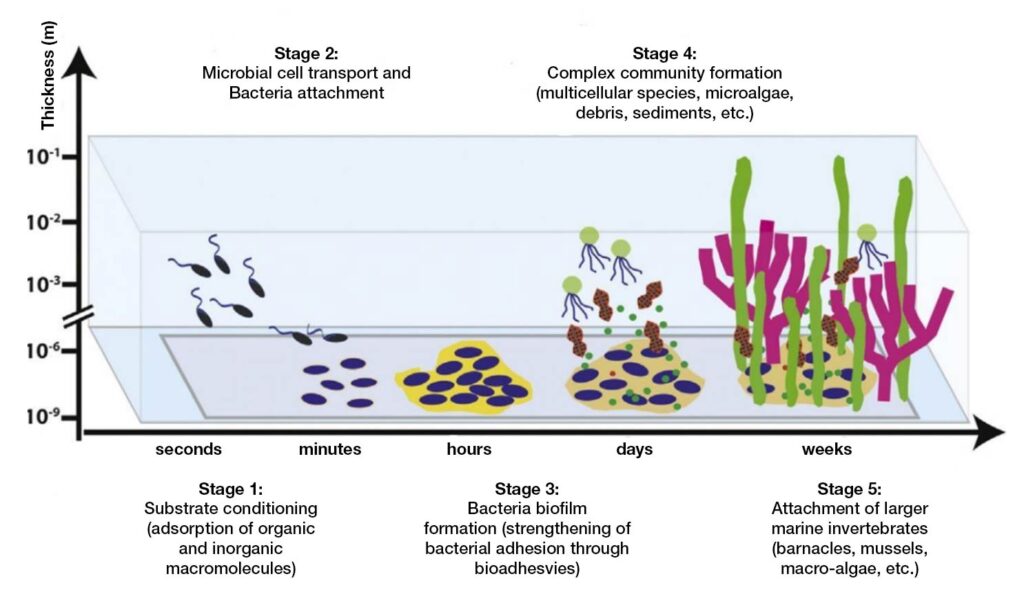IT’S ALIVE!
And no, I’m not talking about Frankenstein’s monster… I’m talking about water!
Covering 2/3 of the Earth’s surface, water—whether in oceans, lakes, or rivers—is the most vital resource on our planet. Complete and complex ecosystems thrive within these waters, enabling all life on Earth.
Because water is so abundant, it plays a crucial role in supporting the systems and infrastructure that define our modern way of life. From transportation and power generation to cooling critical equipment, seawater is invaluable. However, using water that is “alive” to cool our vital networks and systems presents a significant maintenance challenge: Biofouling and scaling caused by marine microorganisms.
The Scourge of Marine Microorganisms
Seawater (fresh and salt) contains many forms of bacteria, algae, and protozoans. In fact, it is FULL of these little beasties, and even though they are virtually invisible to the naked eye, the impact of their nefarious behavior will drive even the most Christian of men to seek their demise.
Suspended in seawater, they float freely, traveling anywhere the water currents take them. Eventually they come into contact with submerged surfaces and they adhere themselves to them. As they supplant themselves, they form a slimy biofilm, and as the biofilm grows, it increases the porosity and roughness of the surface, creating an ideal habitat for larger and more complex organisms, such as barnacles, mussels, and seaweeds to fester. This process, known as biofouling, can severely impact the functional efficiency of marine systems that use raw water for function.
Understanding Biofouling

There are two distinct types of biofouling that can occur within raw water networks:
- Biofilm:
- Biofilm is the initial buildup of organic biological material caused by bacteria and algae in seawater. This soft growth is common in a vessel’s raw water cooling networks and can be easily removed if addressed early. However, it can spread throughout the network, leading to more severe issues if left unchecked.
- Bioscale:
- Bioscale appears as a buildup of mineral deposits but is actually hardened biological material that forms when biofilm is left untreated. Calcareous algae, Bryozoans, and other reef-building algae create calcium-containing “exoskeletons” for protection, which encrust surfaces. This encrustation becomes an ideal substrate for the attachment of barnacles, mussels, and other marine nuisances.
Once biofilm and bioscale establish themselves in a raw water system, they can quickly grow due to the constant flow of nutrient and oxygen-rich seawater, making biofouling a persistent problem.
Remediation & Prevention of Biofouling
One of the most effective methods to combat these microscopic pests is routine, correct freshwater flushing. This approach, similar to “fighting fire with fire,” involves using freshwater to disrupt the life cycle of marine microorganisms in seawater.
How does it work? Marine microorganisms, adapted to the saline conditions of seawater, are highly susceptible to osmolytic shock when suddenly exposed to fresh water. This shock occurs when the osmotic pressure around their cells changes drastically, causing the cells to swell and rupture, ultimately killing the organisms.
Factors such as the speed of salinity change, temperature differences, and turbulence during flushing all contribute to the rapid death of these microorganisms. By eliminating the early colonizers of biofouling, freshwater flushing helps keep raw water systems clean and reduces the need for chemical treatments or manual cleaning of surfaces.
AND A BONUS – Preventing the Spread of Invasive Species
Another concerning factor about marine microorganisms and other sea life that exist in raw water systems is the inadvertent transferring of them from one body of water to a new ones. When boats transit between them, these aquatic hitchhikers can easily jump from one habitat to another, invading the existing eco-systems and wreaking havoc. Routine freshwater flushing prevents them from jumping by killing the microorganisms before they have a chance to spread.
The Freshwater Flush
As nature has shown us so many times, it has an answer for everything that ails us, including dealing with the vermin that cause so much consternation and frustration. Routinely and correctly executed freshwater flushing significantly mitigates the impact of marine microorganisms on raw water cooling systems. It reduces the need for chemical treatments and extends service intervals, making it an essential practice for maintaining marine systems.
So, I offer this in closing: Slay the wee beasties and restore peace and joy to your hearts! Flush on, my Nauti Friends!
Dr. Death (aka “David Zacharias, PhD”)

